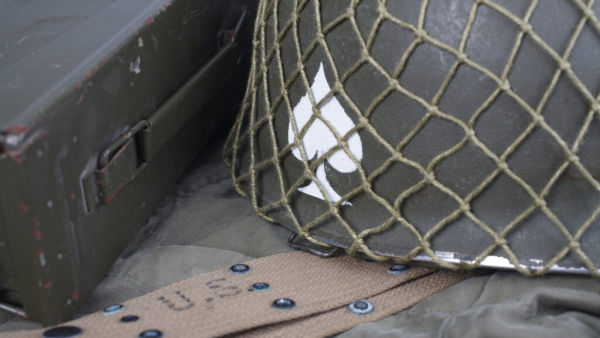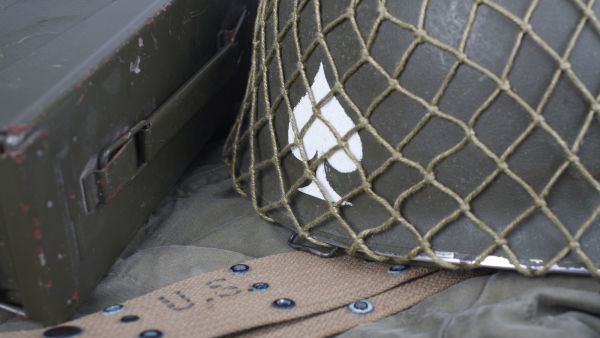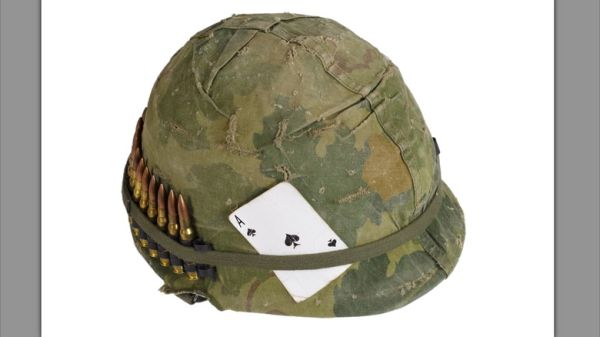Two weeks before the D-Day operation on June 6, 1944, the 101st Airborne Division (aka “The Screaming Eagles”) was getting ready for battle when they realized that they needed a quick way to get the units reassembled in an orderly manner once soldiers from all four infantry regiments landed. The 101st decided that using the four suits of a standard deck of playing cards would be ideal, and painted them onto both sides of the soldiers’ helmets — a little detour in the evolution of the combat helmet.
Diamonds were used for the 501st Infantry Regiment, hearts for the 502nd, while the 327th Glider Infantry got clubs. Last but not least, the 506th Parachute Infantry Regiment — the one that Stephen Ambrose wrote about in his novel “Band of Brothers,” which was then turned into the smash HBO television mini-series — was given spades. It not only became a symbol of good luck for the soldiers but has since become a symbol that represents the 101st Airborne’s success during WWII.
The spade has been a staple on playing cards for a very long time, which were thought to have been invented in China sometime during the Tang Dynasty (618–907 CE) – albeit in a far different form than we know today. Somewhere around 1480, French card makers transformed pre-existing and often confusing suits into trèfles (clovers or clubs), carreaux (tiles or diamonds), cœurs (hearts), and piques (pikes or spades), and we’ve been using these same symbols ever since.
From good fortune to death
The modern symbol for the spade as we know it came from the French sword suit, which was represented as the head of a pike — a long, thrusting spear tipped by a small leaf-shaped steel point. The ace of spades is considered the highest-ranking card in a standard deck in many games, such as bridge, and thus has been associated with good luck, power, and authority.
Interestingly, during the 18th and 19th centuries, the English government taxed every pack of playing cards due to their connection to vices like drinking and gambling. But packs only included 51 cards, and the Ace of Spades (also known as a “Duty Ace”) had to be purchased from the Stamp Office to complete the set. This Duty Ace was highly stylized with intricate details to prevent forgery, which is why this ace typically looks so different from the others in a deck.
During the miserable failure that was the Vietnam War, the ace of spades became known as the death card. According to legend, the French — who once controlled the country — used playing cards to tell fortunes, and the suit of spades was a harbinger of death and bad luck that the locals came to fear. American soldiers became aware of this and began to place the ace of spades on dead Viet Cong to further instill fear. Two lieutenants from Charlie Company (2nd Battalion, 35th Infantry Regiment) asked the United States Playing Card Company for decks made entirely of aces of spades. The company sent thousands as “Secret Weapons.” Soldiers spread them far and wide as another means of psychological warfare.






